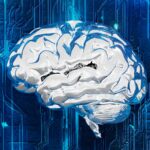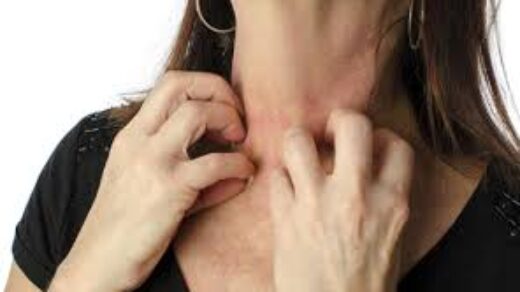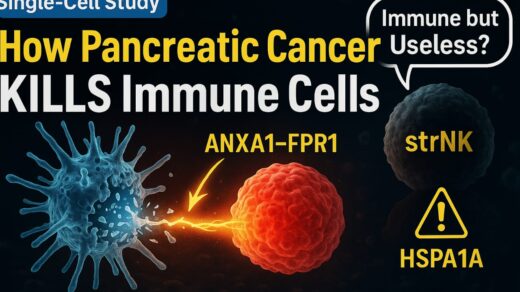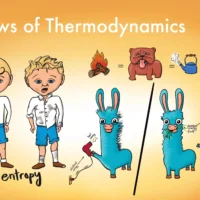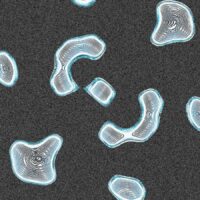Hair pulling is a seemingly simple act that initiates a complex dynamic process along the pathway for pain signaling. It is one of the fastest known responses to pain and is activated directly by the stimulation of sensory receptors embedded in the skin surrounding hair follicles. This article seeks to enlighten on the science behind how the body can recognize pain from hair pulling through nociceptors, nerve fibers, and how the brain responds.
Biology of Hair Follicles and Pain Receptors
Hair follicles are very innervated structures with many nerve endings. Within these are nociceptors, special receptors that have the ability to detect noxious stimuli, pressure, changes in temperature, or tissue damage. Upon the pulling of a hair, the mechanical stress to the follicle immediately activates the nociceptors implanted in the root of the follicle.
There are two major categories of nociceptors that are used:
1. Mechanonociceptors: It is the category of nociceptors that responds to mechanical insults, such as pulling of hair or tissue compression.
2. Polymodal nociceptors: They respond to a multitude of stimuli, such as mechanical and thermal forms of injury as well as chemical insult.
They causes the sharp, severe pain felt in hair pulling. A-delta fibers are thin, myelinated-far better say, covered by a protective sheath of myelin-and thus may therefore conduct electrical impulses very quickly. In fact, this myelination means that A-delta fibers propagate signals anywhere from 20 to 120 meters per second. The speed depends on the diameter of the fiber.
This signal from nociceptors in skin transmits to the brain through three stages.
The three stages are as follows:
1. Transmission to the spinal cord: The pain signal moves to dorsal horn of spinal cord once A-delta fibers are activated.
2. Spinal Cord Synapse: The signal passes through second-order neurons located in the dorsal horn. Signal transmitted through the spinothalamic tract to the thalamus in the brain.
3. Transmission to the Brain From the thalamus, the signal is relayed to the somatosensory cortex that processes painful information, touch, and temperature.
This process, from the activation of nociceptors up to the perception of pain in the brain, only takes milliseconds. Hair-pulling thus is one of the fastest pain-triggering events.
Brain Perception of Pain
Once this signal reaches the brain, it is spread across the somatosensory cortex in the parietal lobe, a very special region that maps sensory input from the whole body to easily, with high speed, determine where and how intense the stimulus :
1. Somatosensory Cortex: This area is responsible for processing the sensory information the person receives, such as pain, temperature, and pressure. Through the interpretation of the signal from the A-delta fibers and translating it into a conscious perception of sharp pain.
2. ACC (Anterior Cingulate Cortex): This is the seat of emotional pain. That’s why, in certain situations, when a person pulls on his hair, it can cause physiological pain and also emotional pain, mostly in those who are pain sensitive, so they feel pain.
Fast Pain vs. Slow Pain: Role of A-delta and C-fibers
The mechanism of the body in signaling pain can be differentiated into two pathways: fast pain and slow pain. Fast pain is transmitted by A-delta fibers, that we have discussed; it’s usually sharp, localized, and of short duration. Slow pain, on the other hand, is transmitted by C-fibers, which, because they are unmyelinated, conduct impulses much more slowly-about 0.5 to 2 meters per second. C-fiber pain is usually dull and throbbing, but also much less easily localized.
Hair pulling activates nearly exclusively A-delta fibers; thus why the pain is very sharp and immediate. After the initial sharp pain, C-fibers may add a dull soreness, but the initiating sensation is carried by the quick activation of A-delta fibers.
Scientific studies on Pain Transmission Mechanisms
In the past few years, neuroscientific research has become impressively effective in unraveling finer details about how pain signals in the nervous system are being processed, using state-of-the-art imaging techniques, such as functional MRI, in the study of brain activity evoked by hair pulling and other forms of mechanical pain stimuli.
A 2021 journal article entitled in the Journal of Neuroscience measured the speed of the transmission of pain it was caused by a hair-pulling stimulus. This study made researchers expose 50 subjects to mechanical forces given to the hair, from moderate to strong. The researchers used EEG to measure the latency of processing from the stimulus to the brain activity and showed that the signals coming from nociception by hair pulling is as fast as milliseconds when it reaches the brain at 50.
This study further served to demonstrate the activation of A-delta fibers would immediately cause a spike in activity in the somatosensory cortex and subsequent activation in the anterior cingulate cortex, demonstrating the sensory and emotional components of pain perception.
Clinical Applications and Trichotillomania
The fast pain response following hair pulling has clinical applications, especially in understanding conditions like trichotillomania, a form of psychological disorder characterized by compulsive hair-pulling activity. Such a study on the perception of pain in patients with trichotillomania may, at the least, provide evidence of changes in activity of nociceptors or differences in pain thresholds. The compulsive nature of hair pulling in trichotillomania might then be related to the peculiar way of an interaction of pain and pulling that such patients may describe as a soothing process despite immediate sharp pain.
This future research into the mechanisms that modulate pain may unscramble better treatment interventions for patients with trichotillomania orientation like cellular level of sensitivity or aberration of the pathway in the anterior cingulate cortex that processes emotions.
Conclusion
Hair pulling leads to one of the fastest responses in pain mechanisms involving the activation of nociceptors and transmission via A-delta fibers. Such a mechanism allows the organism to respond highly promptly to potential damage, thus becoming an important feedback of protection. Further studies on pain perception and signal transmission processes will be continuing, and this would open up new pathways of research in treating pain-related disorders and conditions like trichotillomania by furthering our understanding of this fast-acting system.




